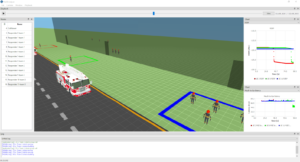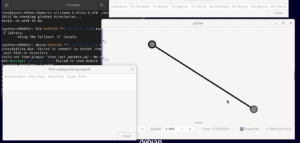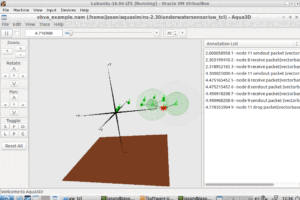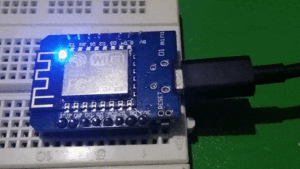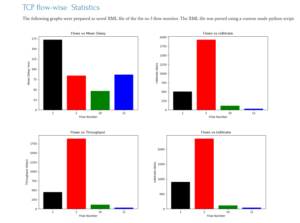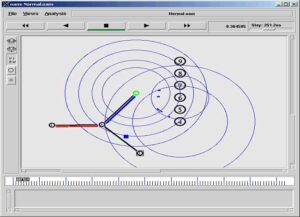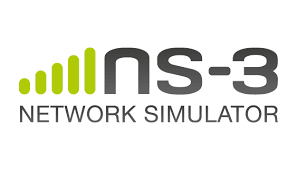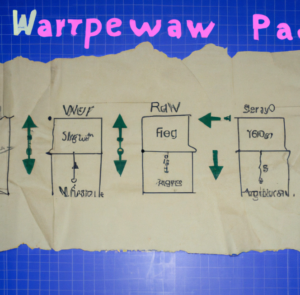Low-power wide-area network (LPWAN).
In fact, LPWAN emerged in 2013 and not denoting any particular technological solution, it serves as a generic term to refer to a class of network technologies designed to communicate wirelessly over relatively long distances using lower power than in case of other networks, such as telephony, satellite communications or WiFi. These two major features, namely energy efficiency and wide signal coverage, not only give shape to the name of the technology but also make it the perfect match for the needs of the ever-evolving market of IoT applications[4].
These networks use low–power radio signals, such as those in the sub–1 GHz range, to send small amounts of data over a large area. LPWANs are used in applications such as wireless sensor networks(WSN), smart energy, smart cities, and the Internet of Things (IoT). They are also used to connect devices in remote locations that don’t have access to reliable internet connections. LPWANs are ideal for applications that require low data rates, long battery life, and low cost. Examples of LPWANs include Sigfox, LoRaWAN, and Weightless.
Due to the mission-critical nature of industrial applications, carrier-grade reliability of the communication network is a prerequisite in industrial IoT. A high message reception rate ensures critical data is delivered when it’s needed the most for timely response to impending issues. Yet, with rapidly growing wireless IoT deployments and extensive use of the license-free spectrum, Quality-of-Service and scalability challenges will become increasingly prominent among many LPWAN solutions[3].
LPWANs are commonly used in applications including Smart metering, smart lighting, asset monitoring and tracking, smart cities, precision agriculture, livestock monitoring, energy management, manufacturing, and industrial IoT deployments etc.,[6].
The following image from [5] shows the market snapshot of LPWAN as on 2021

Top Seven IoT technologies
The following table from[1] compares the features of the top seven IoT technologies that are available in the market.

1. LoRa/LoRAWAN
LoRaWAN is a Low–Power Wide–Area Network (LPWAN) protocol designed to allow low–power devices to communicate over long distances in a secure and reliable way. It is based on the LoRa wireless technology developed by Semtech and is designed to support a variety of applications ranging from asset tracking to smart city solutions.
LoRaWAN is a star–of–stars network architecture, which means each node connects to a central gateway that is then connected to the internet. This architecture allows for very low–power operation, low cost and a high degree of scalability. LoRaWAN is an open standard, which means that any compatible device can join the network without the need for additional infrastructure.
Pros and Cons of LoRaWAN[1]
Pros:
- allows building dedicated private networks
- 3 supported device classes for better customization
- unlicensed spectrum used (cellular networks not needed)
Cons:
- forced to buy Semtech chips, since LoRa format is owned by Semtech
- higher data rates increase the probability of errors
- message acknowledgement at limited listening windows impacts overall performance
2. Sigfox
Sigfox is a global communications service provider that enables the Internet of Things (IoT) by providing wireless connectivity to billions of devices. It provides a low–power wide–area network (LPWAN) that uses radio frequency technology to connect IoT devices to the cloud with secure and reliable data transmission. The service is ideal for applications that require long–range connectivity and low power consumption, such as asset tracking, smart metering, and home automation.
Sigfox ensures low-bandwidth uplink transmission at up to 300 bps and very limited downlink at only 12 bytes per day. Basically, Sigfox can be used effectively only to gather sensor data, but can’t send any commands back to the sensors. Low bandwidth contributes greatly to reduced power consumption – an end device can operate up to 10 years on a single AA battery. The signal can travel a distance up to 50 km in rural areas and up to 10 km in a concrete jungle of large cities[1].
Pros and Cons of Sigfox[1]
Pros:
- chips available from multiple vendors — inexpensive endpoint radios (devices) since they listen to a very narrow band of spectrum
- up to 1 mln devices per base station
- very energy-efficient = long battery life
Cons:
- single point of failure – all infrastructure is owned by Sigfox
- uplink only (one-way communication)
- low data rate limits the scope of possible applications (low latency interaction is problematic)
3. NB-IoT
NB–IoT (NB–LTE Cat NB1 and Cat NB2) is an LPWAN (Low Power Wide Area Network) technology based on existing LTE mobile communication networks. It is a low power wide area network technology specifically designed for low cost, low power consumption, and wide coverage of the Internet of Things (IoT) applications. It is designed to be used in cellular networks with minimum data rates and low power consumption. NB–IoT has a much more optimized coverage than GSM/GPRS, with a coverage range of up to 30 kilometers. NB–IoT can be used for applications such as smart metering, asset tracking, remote monitoring, and control.
Pros and Cons of NB-IoT[1]
Pros:
- great battery life (>10 years)
- deep in-building and underground propagation
- infrastructure is built and maintained by cellular operators
Cons:
- suboptimal for rural and suburban areas where 4G/LTE coverage is poor or non-existent
- devices are medium-cost
- can’t have a dedicated network infrastructure
4. LTE-M
LTE–M (LTE–MTC, LTE–M1, LTE–M2) is a type of low–power wide–area network (LPWAN) technology developed by 3GPP as part of the Long Term Evolution (LTE) family. It is designed to enable low–cost, low–power communications between connected devices over a wide area. LTE–M is specifically aimed at providing improved coverage and communication quality for Internet of Things (IoT) applications while using less power than traditional cellular technologies. The primary advantages of LTE–M are low power consumption, low cost, and wide area coverage. LTE–M also supports device roaming, allowing devices to move between different network operators.
One of the distinctive functions in LTE-M protocol is a Power Saving Mode, which made it possible to extend battery life up to 10-20 years. Hardware updates are possible over the air but can reduce battery life. LTE-M guarantees bi-directional data transfer over the distance of up to 5 km at the rate up to an impressive 1 Mbps[1].
Pros and Cons of LTE-M[1]
Pros:
- infrastructure is already there in many places
- can be very power-efficient
- fast data rates
Cons:
- low-cost chips (and devices) are yet to be developed
- limited coverage outside the USA
5. RPMA
Random phase multiple access (RPMA)[2] is an advanced proprietary technology stack (radio modules, access points, software) designed by Ingenu, formerly known as On-Ramp Wireless, from scratch. Even though RPMA started later than other proprietary technologies, like LoRa and Sigfox, its pace of development and extension is impressive – its network in the USA is already of comparable size with those other two[1].
Pros and Cons of RPMA[1]
Pros:
- high uplink rate
- virtually unlimited scalability
- globally available interference-proof license-free band of spectrum
Cons:
- relatively high pricing
- mostly US coverage as of now (June 2017)
- uses more processing power which may result in lower battery life for some applications
6. Weightless–P
Weightless–P is a low–power wide area network (LPWAN) protocol developed by the Weightless Special Interest Group (SIG). It is designed to provide long–range, low–power communication in applications such as Internet of Things (IoT), machine–to–machine (M2M) communications, and smart cities. Weightless–P is based on an open standard, which allows any company to develop compatible devices and services. The protocol uses a narrowband frequency, allowing for long–range communication and low power consumption. It is designed to be interoperable with other LPWAN technologies, such as LoRaWAN and Sigfox.
Pros and Cons of Weightless–P[1]
Pros:
- adaptive data rates
- open standard
- high quality of service
Cons:
- Limited transmission range
- not much hardware on offer
- technically complicated scalability
7. Symphony Link
Symphony Link is a secure, long–range, wireless networking technology developed by Semtech Corporation. It is designed for applications such as asset tracking, industrial automation, energy management, and other Internet of Things (IoT) services. It uses the Semtech LoRa technology, which is based on the IEEE 802.15.4 standard, to provide robust, low–power networking with long–range coverage. The network utilizes a star topology, with gateways providing the backbone of the network. Symphony Link is designed to provide secure, reliable, and low–latency communications, and is suitable for both private and public networks.
Pros and Cons of Symphony Link[1]
Pros:
- bi-directional message acknowledgement
- adjustable power and data rate
- high interference resistance
Cons:
- reliant on Symphony Link proprietary software
- average data rates
- the smaller community of followers
Note: the profile image of this article was taken from [7].
Simulation of LPWAN/IoT with Network Simulators
Simulation of LoRaWAN
The following article presents the simulation of LoRaWAN under ns-3
The following article presents the simulation of LoRaWAN under Omnet++
Installing FLoRa under OMNet++ for doing IoT ADR Simulation.
Simulation of Sigfox[10]
It is possible to do the WSN/IoT based research works under ns-3 using ns3-sigfox moudule also. The following article explains the way of installing ns3-sigfox moudule under ns-3.33 version using ns-3-dev version:
Installing ns3-sigfox module under ns3.33 by using ns-3-dev.
Simulation of NB-IoT[11]
It is possible to do the WSN/IoT based research works under ns-3 using NB-IoT moudule also. The following article explains the way of installing NB-IoT module under ns-3:
Simulation of LTE-M[12]
It is possible to extend the present 5G technology to implement LTE-M. In fact, the present 5G is evolving towards it.
Installing mmWave ns-3 Extension Module to Simulate 5G Wireless Systems
In conclusion, we could not find the possibility of simulating RPMA, Weightless-P, Symphony Link and any other LPWAN technology with any of the existing network simulators. One may address simulating these networks in a suitable simulator platform in future.
References
- https://flespi.com/blog/top-7-technologies-for-iot-connectivity-2017
- https://en.wikipedia.org/wiki/Ingenu
- https://behrtech.com/lpwan-technology/
- https://www.avsystem.com/blog/LPWAN/
- https://iot-analytics.com/5-things-to-know-lpwan-market/
- https://www.techtarget.com/iotagenda/definition/LPWAN-low-power-wide-area-network
- Dina M. Ibrahim and Dina Hussein, Internet of Things Technology based on LoRaWAN Revolution, Conference Paper · June 2019 DOI: 10.1109/IACS.2019.8809176
- https://www.projectguideline.com/simulation-and-analysis-of-iot-lorawan-networks-under-ns-3/
- https://www.projectguideline.com/installing-flora-under-omnet-for-doing-iot-adr-simulation/
- https://github.com/DEIS-Tools/ns3-sigfox
- https://github.com/TommyPec/ns-3-dev-NB-IOT
- https://www.projectguideline.com/installing-mmwave-ns-3-extension-module-to-simulate-5g-wireless-systems/

 Discuss Through WhatsApp
Discuss Through WhatsApp